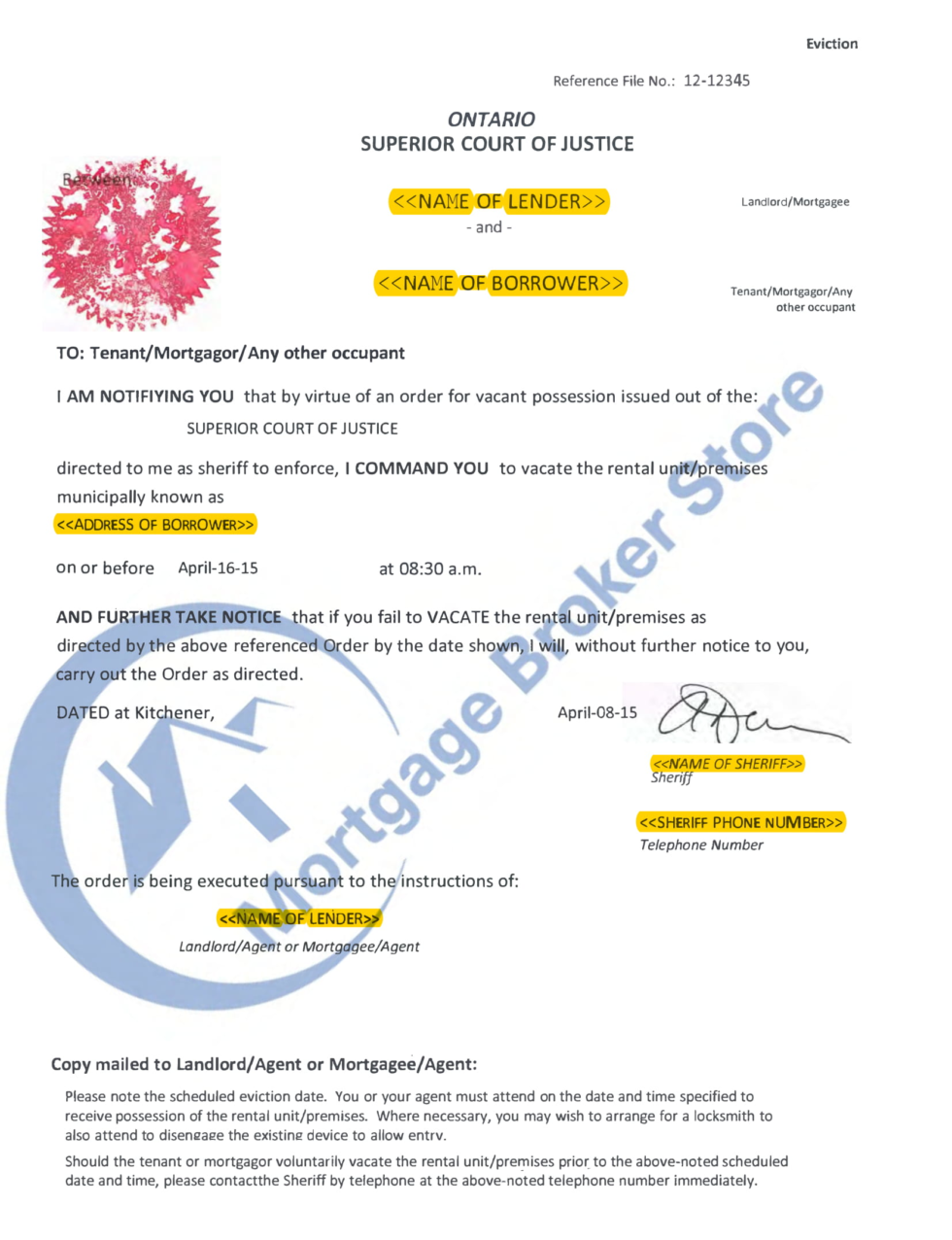An Eviction Notice is one of the final steps in Ontario’s Power of Sale process. At this point, the lender has already sent the Writ of Possession to the local sheriff’s office. The sheriff will arrive on the specified date to evict occupants and change the locks as indicated in the notice.
Occupants will have a brief period to gather belongings before being escorted out of the property by authorities. At this point, the only way to stop the eviction is to pay the lender in full. This includes the mortgage principal, interest, and all related expenses incurred by the lender.
What Happens After an Eviction Notice
Once the eviction notice is delivered and the occupants are removed, the lender will prepare to sell the property. Typically, the property is listed and sold by a licensed Ontario real estate agent.
In rare instances, the property may be sold privately, but the lender must always sell it for fair market value. In Ontario, property sales typically take over a month. After the sale, fees and debts are settled, and any remaining profit goes to the homeowner. Typically, the fees for processing a Power of Sale are high, leaving little profit for the homeowner.
Want to learn more about Power of Sale?
Contact us for a free consultation
Possible Solutions
If you’ve received an eviction notice but are still living on the property, then you still have full control over selling the property or getting a new mortgage. During the limited time you have remaining, if you can sell the property, then the Power of Sale action will stop. Typically you will need to sell it at a discount in order to encourage a quick sale. Many private lenders who purchase properties will pay with cash, which means that the current mortgage can be paid immediately, and the buyer does not have to wait for financing. If there is a large amount of equity in the property, a private lender may be able to quickly appraise the property and provide the financing needed to stop the Power of Sale.
If you have already been evicted, then the solutions are more difficult since most home buyers want to inspect the property, and most private lenders want an appraisal. At this point, the previously mentioned solutions will still work, but the homeowner must request a supervised visit for any inspections to take place. The cost of the supervised inspection is charged back to the mortgage as a fee related to the Power of Sale.
The lender in a Power of Sale won’t permit the homeowner back unless financing is secured or a sale is certain.
Important Legal Notice
The above information serves as general advice. It is imperative that you seek a legal professional when dealing with an Eviction Notice in a Power of Sale scenario. A Power of Sale is a highly complex legal process, influenced by specific circumstances. Our team includes expert lawyers specializing in Power of Sales and real estate law. Our professionals possess extensive knowledge and experience, ensuring you receive the best possible advice. Trust our team to navigate the intricacies of your situation with precision and dedication. For a free consultation, call 647-931-5396 or email jonathan@powerofsalesontario.ca. Take action now and let our experts help secure your future.
